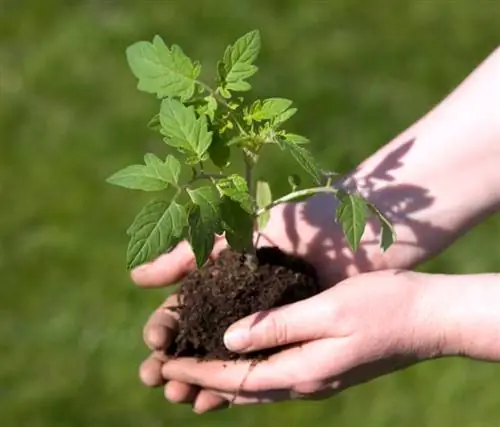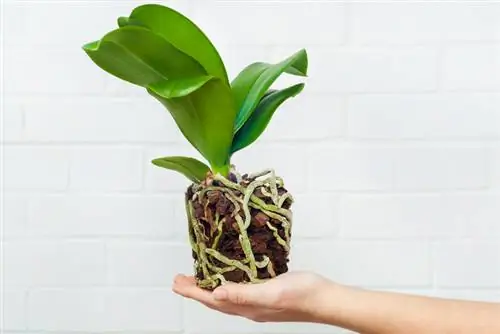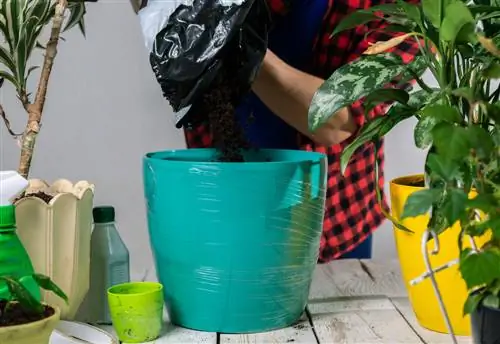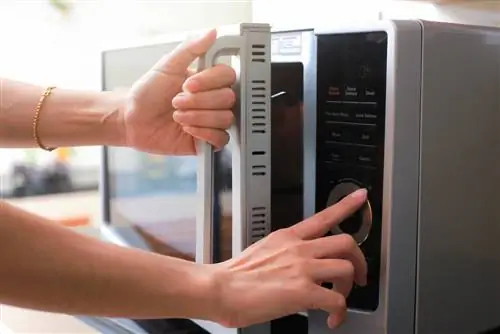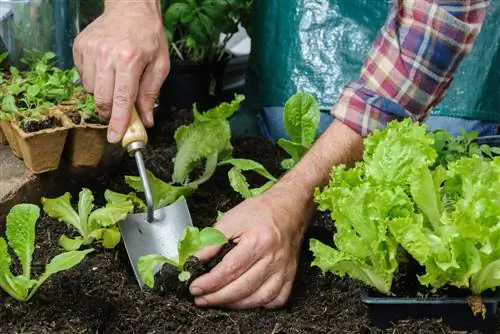- Author admin [email protected].
- Public 2023-12-16 16:46.
- Last modified 2025-06-01 06:02.
From sowing to planting outdoors, tomatoes go through divergent growth phases. Anyone who adapts the quality of the earth to the expanding demands has a clear advantage. We explain all the important details about potting soil.
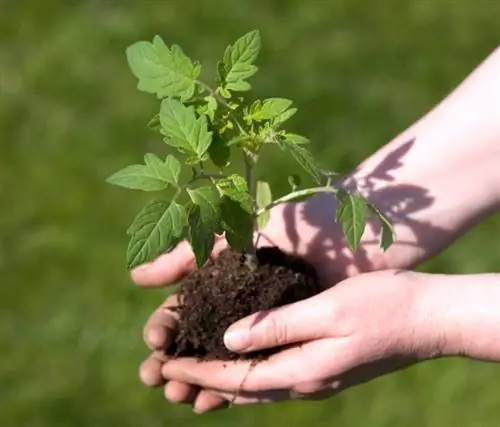
Which soil is best for tomatoes?
For tomatoes, lean growing substrate is suitable for germination, mixed pricking soil for the first growth and nutrient-rich soil for growing in beds or containers. Ingredients for mixing high-quality soil are: compost, garden soil, coconut fiber/perlite, bark humus and sand.
Successful cultivation in poor soil
The first steps into the life of a tomato plant take place in the leanest possible substrate. Light, heat and water are required to get the seeds ready to germinate. Nutrients are more of a hindrance at this point. The mineral s alts could harm the tender seedling roots. In addition, the young plants would see no reason for the desired root growth, with a rich nutrient table directly in front of the root tips.
Recommended potting soil:
- commercially available seed or growing soil (€6.00 at Amazon)
- Peat and sand mixed in equal parts
- pure coconut humus as a peat substitute
- Uniform soil made from white peat, perlite and natural clay
Would you like something more? - the right soil for pricking out
After germination, tomato plants show what power they have. The growth progresses at an impressive pace, so pricking takes place after a few days. Now the nutrient content of the soil can be increased a little, because after all we are dealing with heavy eaters. These substrate mixtures are suitable:
- commercial vegetable soil, emaciated with peat, sand or perlite in a ratio of 1:2
- special standard pricking soil with a portion of green waste compost (available from specialist retailers)
Hobby gardeners who value first-class soil right from the start mix themselves. Ingredients are compost (25%), garden soil (15%), coconut fiber/perlite (40%), bark humus (10%) and sand (10%).
Tomatoes thrive in this soil until harvest
Successful cultivation produces vital and strong tomato plants that are now hungry for nutrients. After planting outdoors, experienced tomato gardeners pamper their magnificent specimens with these soil qualities:
- in the bed: humus-rich, nutritious soil, fresh, moist and permeable
- in the bucket: high-quality vegetable or potting soil
In both cases, the substrate is additionally enriched with mature garden compost, horn shavings, horn meal or adequate organic fertilizer.
Tips & Tricks
Despite all the manufacturers' assurances, growing soil is often infected by insect eggs, fungal spores or bacterial pathogens. Before use, simply sterilize the substrate in the oven at 150 degrees top and bottom heat for 30 minutes. It's even quicker in the microwave at 800 watts for 10 minutes.

